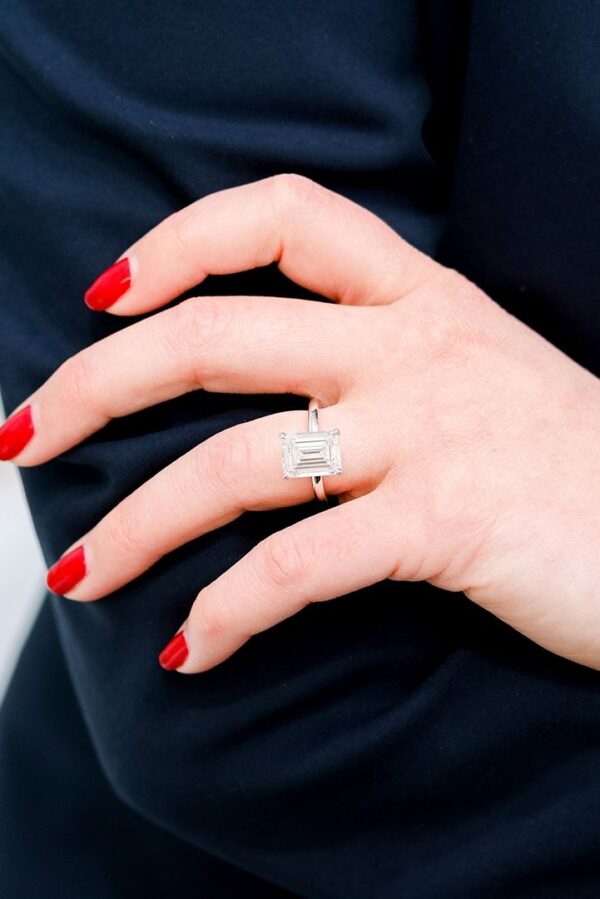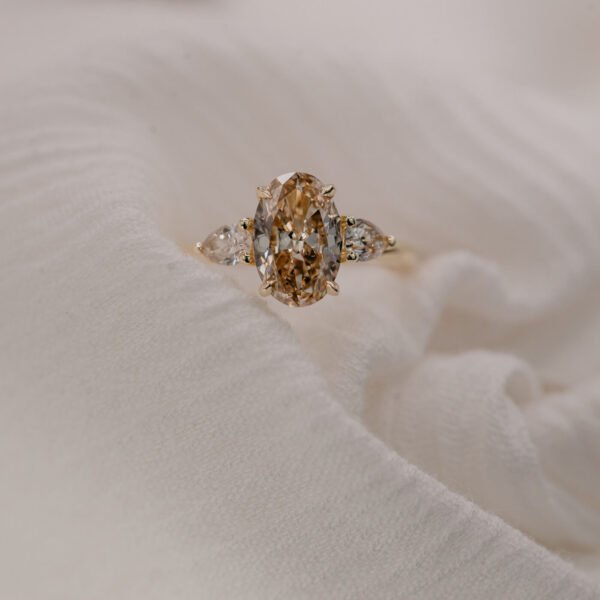
Diamond jewellery is not simply a stunning piece that beautifies your look. This asset holds its value for generations. Buying a real diamond ring or necklace is a costly affair. So, some consumers look for artificial diamonds for customised jewellery. Most buyers check the clarity, colour, and other details while purchasing diamonds. However, have you considered eco-friendliness when you choose these gemstones? Which diamond is a more sustainable choice? Find the differences between natural and lab-created diamonds from an eco-friendly perspective.
Understand the basics of lab-grown and natural diamonds

Both diamonds are crystal-clear and emit spectral colours when you hold them in front of direct light. Although they look identical, the way they are produced is different.
It takes billions of years to form natural diamonds. On the contrary, artificial diamond production involves a short time. However, the physical and chemical properties of both diamonds are the same.
The intense pressure and heat inside the Earth lead to the production of diamonds. Miners extract these stones through different mining operations. The experts go through different steps, from exploration to processing to make the natural diamonds usable to consumers.
On the contrary, artificial diamond creation involves various methods in a controlled lab environment. Chemical Vapour Deposition and High Pressure, High Temperature are the major processes for diamond production. These processes are intended to create the conditions that form natural diamonds. However, within a few weeks, the experts will accomplish the diamond production process. They ensure artificial diamonds have physical and chemical properties similar to the mined ones.
Do natural diamonds affect the environment?

The diamond mining process can cause some environmental issues. Here are a few
Habitat destruction and deforestation
Mining the diamonds and other stones involves clearing large areas. It leads to deforestation and loss of habitat for many animals. In many cases, miners need to remove vegetation and trees to access the diamond-rich area easily. So, extensive mining may affect the ecological balance and harm the wildlife.
Soil erosion
If the miners remove trees during their mining operations, it increases the risk of soil erosion. Without efficient soil management, erosion may result in long-term environmental damage.
Water and air pollution
Diamond mining activities involve using water to process the ore. So, the nearby water sources get contaminated with chemicals and sediment. Moreover, the heavy machinery used for mining the gems releases air pollutants.
Are artificial diamonds more sustainable?
Environmental issues associated with the diamond mining industry are avoidable if you use lab-created gems. As these synthetic diamonds are developed in laboratories, they are cost-effective. Moreover, lab-grown diamonds are eco-friendly for various reasons.
Created in a safe environment
Most synthetic diamond producers are conscious of the environmental impact. So, they aim to minimise detrimental effects on the environment. They know how to save the Earth from damage while producing diamonds.
Sustainable gems
With more investment opportunities and a higher buying capacity, the demand for quality diamonds is increasing. But, diamonds in the mines are very limited. So, lab-created diamonds have become a sustainable choice for meeting consumers’ needs. As the new generation is eco-conscious, artificial diamonds have gained popularity.
No disruption to the natural habitat
Synthetic diamond production using innovative technological procedures in a highly controlled environment. Producers do not implement destructive practices to create the stones. So, this is another reason for the eco-friendliness of artificial diamonds.
Consume minimal energy
Synthetic stone producers use carbon-rich chambers and place small diamond seeds. With heat and pressure, they create every atom. Thus, it is a highly controlled process, causing no harm to the environment. But, the production process needs a small amount of electricity obtained from renewable sources.
No air pollution and destruction to soil
There is no need to dig out the soil to create synthetic diamonds. Experts conduct technologically advanced processes for developing artificial gems.
Mining the diamonds emits 143 pounds of harmful carbon dioxide gases. But, you will find such an issue with artificial diamond production.
Are diamonds recyclable?
Diamonds are not recyclable, but you can transform and reuse them several times. As these gemstones are damage-resistant and do not easily degrade, you can repurpose them. Reusing diamonds is an eco-friendly approach for jewellery designers and consumers. So, you can purchase vintage or modern diamond pendants, necklace, and rings.
Buy the sparkling gems- The most cherished diamond jewellery
Diamonds are undoubtedly the dazzling gemstones that hold their glamour and luxury for years. However, consumers in the present society feel a dilemma, as they are conscious of ethical and environmental impacts. The environmental friendliness of lab-grown and natural diamonds is a debatable issue. But, consumers have shown their everlasting love for diamonds because of their timeless appeal. If you plan to purchase quality diamond jewellery, Sunshine Diamonds is a good destination. You will find an exclusive collection of both natural and lab-grown diamonds.
